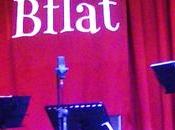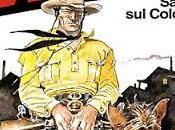GARDENING IS ONE OF MY DELIGHTS; AND I CAN AMUSE MYSELF IN PROJECTS FOR IMPROVE A QUARTER OF AN ACRE AS MUCH AS IF HIS MAJESTY HAD GIVEN ME THE CARE OF KENSINGTON GARDENS.
Catherine Talbot ( 1721 - 1770 ) 1
Se vi lasciate prendere per mano quest'oggi vi porto con menel XVIII secolo, quando ormai il giardinaggio si era consolidato quale attività di svago prettamente femminile.
Fino a solamente un secolo prima per il giardinaggio era considerato necessario quell'ingegno che unicamente del sesso maschile era ritenuto appannaggio e perciò a quello femminile veniva lasciata la cura del Kitchen Walled Garden, l'orto diremmo oggi, dove qua e là faceva la sua amabile comparsa qualche corolla da bulbi o sementi annuali; con il definirsi della politica quale 'impegno' sempre più coinvolgente la classe sociale nobile-aristocratica, il tempo per il giardinaggio venne meno e perciò esso venne affidato ad abili giardinieri, spesso seguiti dalle Ladies che rimanevano a casa e che talvolta, con grande diletto, ad insaputa dei mariti, li affiancavano. maturando passione per questa nobile attività.

Il volto soave della nobildonna che vedete ritratta nel dipinto qui sopra, uno dei pochi che di lei possediamo, è quello di Henrietta St.John, una deliziosa aristocratica che al giardinaggio legò il suo nome e la sua vita, anche se molto raramente se ne fa menzione ed, analogamente, i suoi meriti vengono riconosciuti.
Nata quale unica figlia femmina di Henry, visconte di St.John, e della sua seconda moglie, Angelica Magdalena, nota al suo tempo per le proprie doti di poetessa e scrittrice, di indole docile ed amabile, aveva un solo grande 'difetto', quello di aver raggiunto i 28 anni di età senza ancora essersi maritata e perciò il 20 giugno 1727 la giovane, allora considerata decisamente 'matura', fu forzata ad accettare il matrimonio con il nobile Barone Robert Knight di Burrells, Warwickshire, ma molto presto il matrimonio cadde in disgrazia a partire da quando il marito iniziò con il sospettare una relazione della moglie con Charles Peters, il suo medico.
 Horace Walpole riferisce che ella recava un ritratto del marito che le adornava i capelli quale segno del suo amore e rispetto per lui, ma un ulteriore sospetto causò la definitiva rottura del matrimonio: John Dalton lavorava come tutore al Castello di Hertford, residenza di Lady Frances Seymour-Conway, Contessa di Hertford, amica di Henrietta e dello stesso Dalton; divenuto amico anche della giovane sfortunata Henrietta, Dalton, ammirato anche come poeta, fu la causa definitiva della separazione dei coniugi Knight che avvenne nel 1736.
Horace Walpole riferisce che ella recava un ritratto del marito che le adornava i capelli quale segno del suo amore e rispetto per lui, ma un ulteriore sospetto causò la definitiva rottura del matrimonio: John Dalton lavorava come tutore al Castello di Hertford, residenza di Lady Frances Seymour-Conway, Contessa di Hertford, amica di Henrietta e dello stesso Dalton; divenuto amico anche della giovane sfortunata Henrietta, Dalton, ammirato anche come poeta, fu la causa definitiva della separazione dei coniugi Knight che avvenne nel 1736.Ripudiata dal marito che le impedì anche di vedere i loro due figlioli per il resto della sua vita, Henrietta venne relegata con pochissimo denaro ed il divieto di comunicare anche con gli amici presso Barrell Estate, una proprietà della famiglia nota per la natura selvaggia del luogo, dal 1554 appartenente ai Knights.
Completamente dimentica dei suoi nobili natali si appellò a tutte le proprie energie per dare vita ad una sorta di fattoria in cui allevava 'Tacchini, anatre, polli e faraone' e una ricca varietà di verdure, spesso ottenute dai semi forniti da suo fratello, che sempre le rimase fedele. Lattuga, meloni e cetrioli erano un successo regolare. 2

At the Cottage door, Helen Allingham (1848 - 1926)

Baking Bread, Helen Allingham

Feeding the Kittens, Helen Allingham
Quasi condannata a proseguire la propria esistenza nel silenzio e nella solitudine, la povera Henrietta cercò di adoperarsi per ridare vita a questo luogo desolato,

The Staircase, Helen Allingham
curando in un secondo tempo anche lo spazio verde e trovando immenso diletto nel giardinaggio, anzi, in tutta onestà, è lecito dire che il giardinaggio divenne per la povera Lady l'unica ragione di vita; memore degli insegnamenti che le furono impartiti in giovane età dalla nonna materna e dalla madre, cominciò con il bonificare il luogo, piantare nuovi cespugli ( a lei si deve l'aver coniato il termine 'shrubbery' - arbusti -anche se si tende a dimenticarlo ) ed alberi, eliminando quelli che, nati spontanei, potevano 'disturbare' la percezione prospettica dello spazio all'aperto ... Henrietta si andava così, del tutto inconsapevolmente, qualificando come la prima paesaggista della storia.
Al di fuori della parte così selvaggia Henrietta diede vita ad uno splendido giardino. Aveva costruito un 'ha-ha' per tenere lontani gli animali, segnò gli alberi da eliminare per creare un paesaggio visivamente emozionante evitando di sacrificare lo spazio necessario per i fiori e la frutta, assaporando la sfida di porre una panchina - o 'cattura-sguardo 'come lei le chiamava - anche se aveva pochi visitatori capaci di godere dei panorami ella che aveva creato. 3
Ma dal giardinaggio si trae un diletto che innanzitutto è giovevole per lo spirito di chi lo pratica, poiché quasi come se osservando la vita che si genera e si rinnova dalla terra, questi trovasse rispecchiato in tutto ciò sé stesso e percepisse la forza creatrice della natura, più potente di ogni preparazione farmacologica ed ogni terapia.
Io stessa ho scoperto il giardinaggio ed ho dato vita alle zone più intimistiche e forse poetiche del mio grande ed la tempo selvaggio giardino in un momento di profondo turbamento, in cui credevo di aver smarrito per sempre la speranza e la possibilità di poter godere di qualsiasi forma di serenità; trascorrevo ore ed ore in un lavoro che dapprincipio fu molto faticoso, poi si fece di pazienza ed infine di manutenzione e di grande, grandissima soddisfazione, quella che si prova nel sentirsi vivi a dispetto delle avversità che fanno parte della vita.
Proprio negli anni in cui Henrietta si adoperava a Barrel Estate ( 1775 ) nasceva Friederich Schelling, filosofo tedesco appartenente con Fichte ed Hegel alla corrente dell'Idealismo, che identificherà nella natura «lo specchio finito dell'infinito»: egli sosteneva che essa avesse un'anima ed una forza vivificatrice che si attiva in forme sempre più perfette nel superamento del dualismo con lo spirito essendo essi due aspetti di uno stesso principio assoluto.Ed infine, per concludere, mi piace citare le parole che alcuni giorni fa scrisse in un commento proprio qui, su ~ My little old world ~ il DrSc Giuliano Russini
" C'è più potere ed energia in un boccio di fiore che si schiude, che negli arsenali di tutti gli eserciti di questo pianeta".A presto, miei cari amici e lettori ♥


Bibliografia:
Catherine Horwood, GARDENING WOMEN - THEIR STORIES FROM THE 1600 TO THE PRESENT, Virago Press, Great Britain, 2010
Jane Brown, My Darling Heriott: Henrietta Luxborough, Poetic Gardener and Irrepressible Exile, Harper Collins, .....
Citazioni:
1 - Catherine Horwood, GARDENING WOMEN - THEIR STORIES FROM THE 1600 TO THE PRESENT, Virago Press, Great Britain, 2010, pag. 99
2 - Ibidem, pag. 93
3 - Ibidem, pag. 94

GARDENING IS ONE OF MY DELIGHTS; AND I CAN AMUSE MYSELF IN PROJECTS FOR IMPROVE A QUARTER OF AN ACRE AS MUCH AS IF HIS MAJESTY HAD GIVEN ME THE CARE OF KENSINGTON GARDENS.
Catherine Talbot ( 1721 - 1770 ) 1
If you were allowed to join hands today I bring with me
in the eighteenth century, when it had consolidated gardeningas a leisure activity feminine.
Until just a century earlier for gardening was considered necessary that kind of intelligence which only of males was considered the prerogative and therefore to women was left the care of the Kitchen Walled Garden, where here and there made its amiable appearance some annually corolla from bulbs or seeds; with the defined of politics as 'commitment' increasingly engaging the noble-aristocraticsocial class, the time for gardening wasn't enough anymore and then it was entrusted to skilled gardeners, often followed by the Ladies who remained at home, and who sometimes, with great delight, without the knowledge of their husbands, flanked them, maturing passion for this noble activity.
- picture 1
The sweet face of the noblewoman you see portrayed in the painting above, one of the few of her we own, is Henrietta St.John's, a delicious aristocratic who linked her name and her life to gardening, though very rarely it is mentioned and, similarly, her merits are recognized.
Born as the only daughter of Henry, Viscount of St.John, and his second wife, Angelica Magdalena, known as a poet and writer, docile and sweet-natured, she had only one big 'defect', that of having reached 28 years of age without getting married and that's the reason why on June 20th, 1727, the young, then definitely considered 'mature', was forced to accept the marriage with the noble Baron Robert Knight of Burrells, Warwickshire, but very soon this marriage fell out of favor from when her husband began to suspest a relationship of hers with Charles Peters, his doctor.
- picture 2 on the left - Horace Walpole says that she bore a portrait of her husband that adorned their hair as a sign of her love and respect for him, but another suspect caused the final breakdown of the marriage: John Dalton worked as a tutor at Hertford Castle, the residence of Lady Frances Seymour-Conway, Countess of Hertford, friend of Henrietta and of Dalton too; when he became a friend of the unfortunate young Henrietta, Dalton, also admired as a poet, was the definitive cause of the separation of the Knights that occurred in 1736.
Divorced from her husband that prevented her even to see their two children for the rest of their lives, Henrietta was relegated with very little money and prohibited to communicate with her friends at Barrell Estate, a property of the family known for the wild nature of the place, belonging to the Knights from 1554.
Forgetting completely her noble birth and appealed to all her energies, she tried to create a kind of farm where she raised 'Turkeys, ducks, chickens and guinea-fowl' and a varied vegetable plot, often from seeds provided by her brother, who always remained loyal to her. Lettuce, melons and cucumber were a regular success.2
- picture 3 - At the Cottage door, Helen Allingham (1848 - 1926)
- picture 4 - Baking Bread, Helen Allingham
- picture 5 - Feeding the Kittens, Helen Allingham
Almost doomed to continue her existence amongst silence and solitude, the poor Henrietta tried to work to restore life in this desolate place
- picture 6 - The Staircase, Helen Allingham
devoting herself trying to restore, then, the green space and finding immense pleasure in gardening, indeed, in all honesty, it is permissible to say that gardening became for this poor Lady the only reason for living; mindful of the lessons that were taught as a young girl by her maternal grandmother and mother, she began with the clean up the place, planting new bushes (she was responsible for the coining the term 'shrubbery' even if history tends to forget ) and trees, eliminating those that, born spontaneously, could 'disturb' the perspective perception of the open space ... and Henrietta, unconsciously for sure, in this way, was going to qualify herself as the first landscape gardener in history.
Out of the wilderness Henrietta created a substantial garden. She had a ha ha built to keep out to encroached animals, she markead out trees to create a visually exciting landscape while making no sacrifices in the space needed for flowers and fruit, she relished the challenge of placing a seat - or 'eye-traps' as she called them - althought she had few visitors to enjoy her vistas. 3
But gardening is a delight that draws first its beneficial to the spirit of those who practice it, because it's almost as if observing the life that creates and renews the earth, it can find itself reflected in everything and perceives the creative power of nature, more powerful than any drug preparation and each therapy.
I myself have discovered gardening and gave life to the most intimating and perhaps poetic corners of my large and at the time still wild garden in a moment of profound anxiety, in which I thought I had lost forever the hope and the chance to enjoy any form of serenity; I spent hours and hours in a work that at first was very tiring, then requiring patience and finally maintenance and then arrived a great, great satisfaction, that satisfaction you can feel when you feel yourself alive in spite of the adversities which are part of life.
Just in those years when henrietta was working so hard at Barrell Estate (1775) was born Friedrich Schelling, a German philosopher who, with Fichte and Hegel, belonged to the current of Idealism, and will identify the Nature as the "the finished mirror of the Infinity": he argued that it had a soul and a vivifying force that is active in ever more perfect forms in overcoming the dualism with the spirit since they are two sides of the same Absolute Principle.
And finally, I would like to quote the words that some days ago, right here, on ~ My little old world ~, DrSc Giuliano Russini wrote in a comment:
"There is more power and energy in a budding flower that's going to open, that in the arsenals of all the armies of this planet."
See you soon my dearest friends and readers ♥


Bibliography:
Catherine Horwood, GARDENING WOMEN - THEIR STORIES FROM THE 1600 TO THE PRESENT, Virago Press, Great Britain, 2010
Jane Brown, My Darling Heriott: Henrietta Luxborough, Poetic Gardener and Irrepressible Exile, Harper Collins, .....
Quotations:
1 - Catherine Horwood, GARDENING WOMEN - THEIR STORIES FROM THE 1600 TO THE PRESENT, Virago Press, Great Britain, 2010, page 99
2 - Ibidem, page 93
3 - Ibidem, page 94
This post is linked up to the lovely blog

http://strangersandpilgrimsonearth.blogspot.it/2015/04/the-art-of-home-making-mondays-please_13.html






